Just A Moment
An interactive light installation design project in MAP Mima to arouse the enthusiasm
and positive feelings of people in Lake Macquarie City
Design Overview
“Just for a moment” is an interactive light installation design project in MAP Mima to arouse the enthusiasm and positive feelings of people in Lake Macquarie City. Through scanning a QR code users will be able to approach this interactive artwork via their mobile device. Users can set the catenary light styles in the mobile interface by selecting different pattern balls. The light installation will generate basic patterns that coordinate users’ personalized selection. For richer, more complex and vivid light effects, users need to play the ball game in the mobile interface – gain corresponding scores to see enhanced lighting effect.
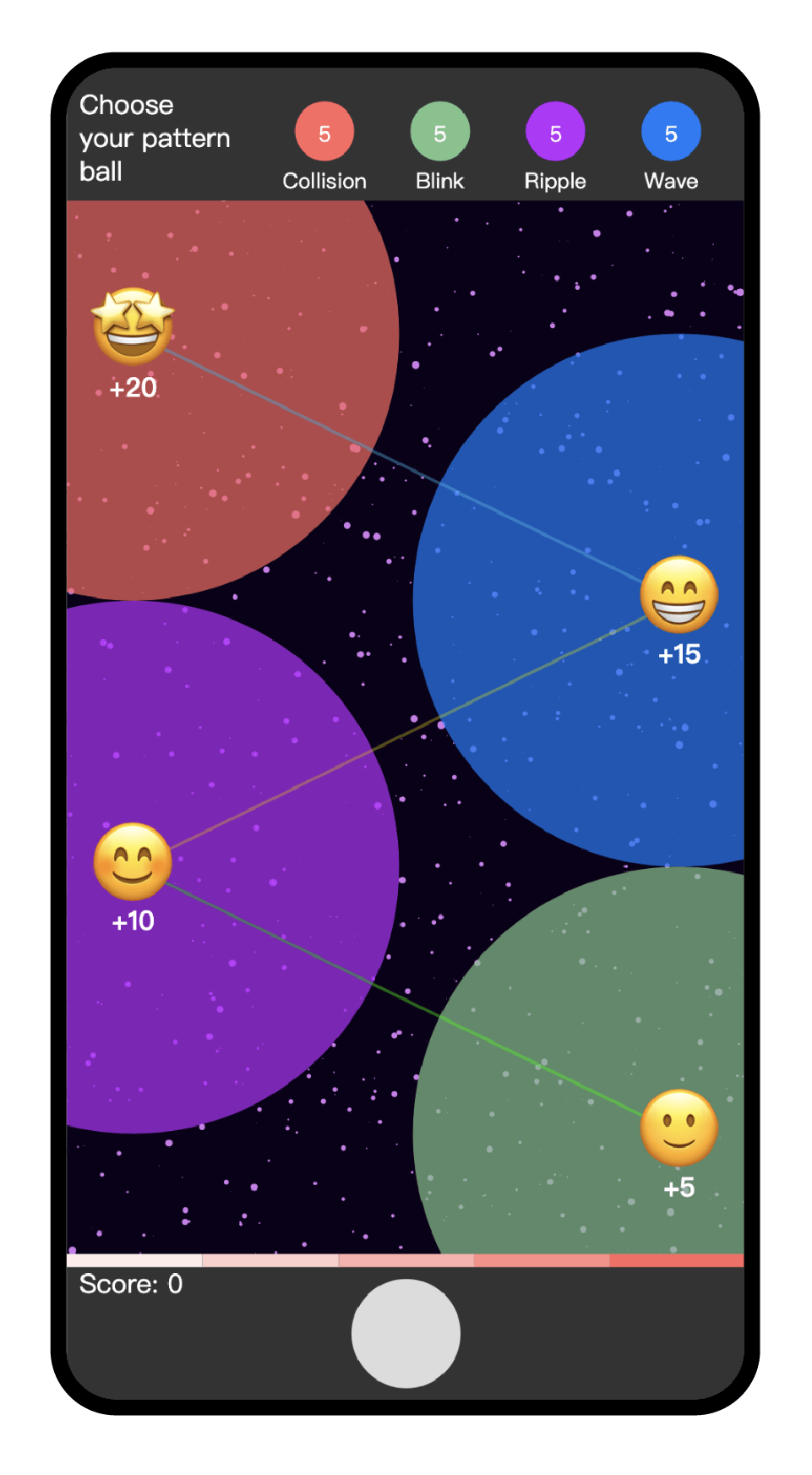
Project Background
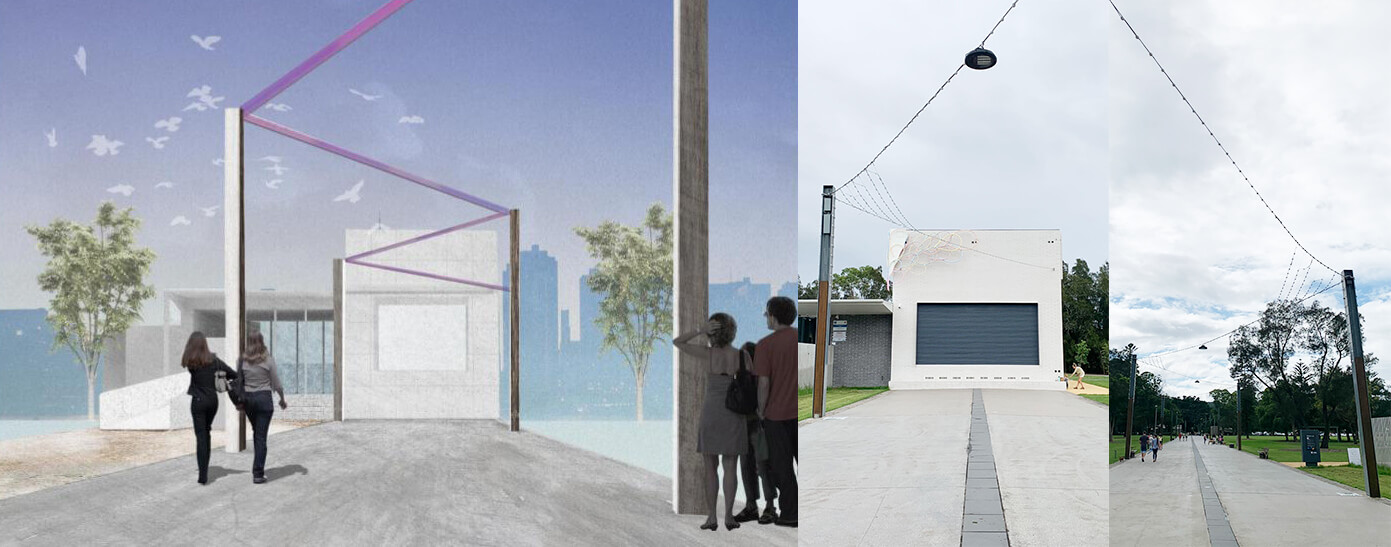
My Role
Design methods
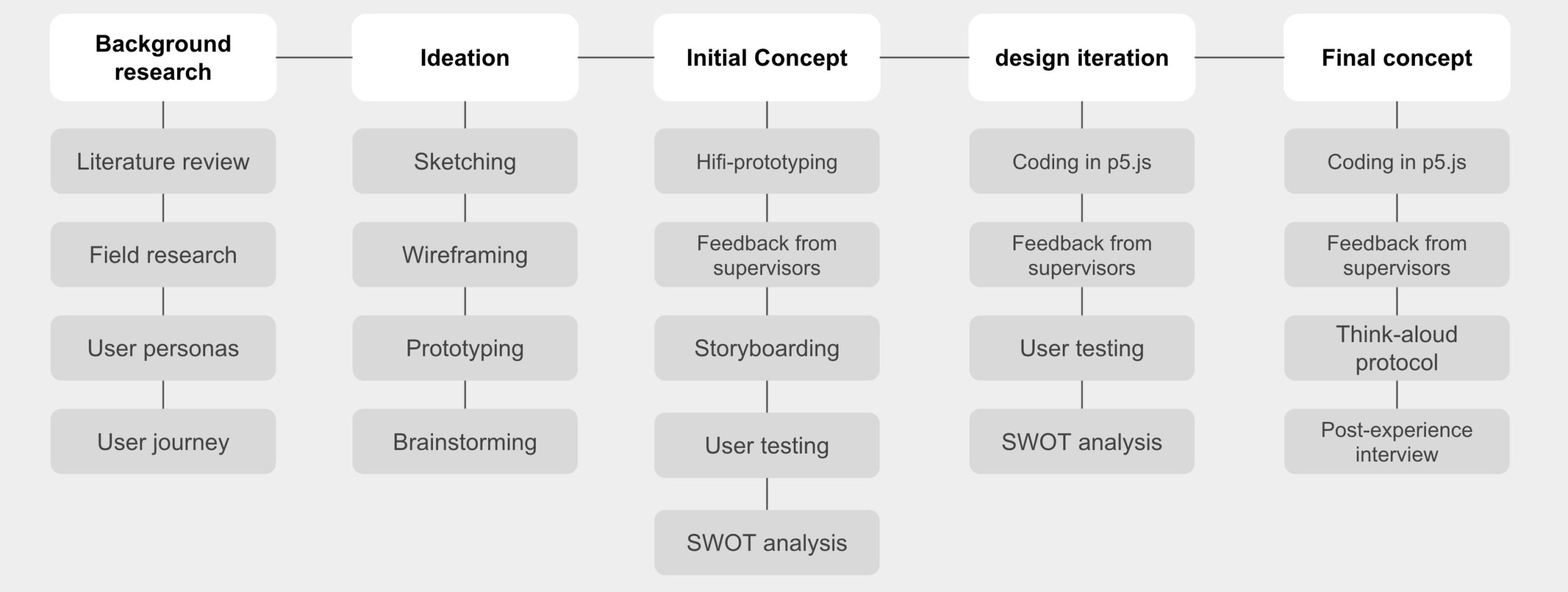
Background Research
We conducted field research in Multi-Arts Pavilion mima and Speers Point Park to understand our potential users by observing what they do and what their experience and feelings are in the community. We also use Interview method to collect useful information for our project in this field research.
When we conducted user research (observation and interview) in this area, we found that both residents and tourists treat this place as a relaxing space where they can enjoy family events and socialize with friends, and do regular exercises such as skateboarding and jogging. Combining literature review and user research, we found three potential opportunities that we could develop in our concepts:
Negative mental and emotional conditions

As the fast-paced life and the spread of COVID-19 and its precaution measures continue to bring negative effects on people’s feelings, such as stress, depression, and other mental or emotional related problems, we hope to design the catenary lights as a ‘natural mood enhancer’ to help users achieve the transformation from negative feelings to positive feelings.

Use relevant design elements including movement and color of lights, to bring users positive feelings
Family and friend based socialization

We find that most of the social activities in this place are family, personal, and friend-based. This place may just be an area for them to host their entertainment and social activities, and it is nothing special compared to other parks. Therefore, we intended to design the catenary light to connect everyone who plays and interacts with it. We hope they will be able to build shared memories with others and even make new friends after completing their interaction.

Design the concept to allow multiple participants at the same time as well as individual control
Physical activities

Except for socialization, most residents come to this place for physical activities. Since the catenary lights are installed on the main road of Speers Point Park where many activities take place, we wanted to design the lights to bring extra digital entertainment effects that normal physical activities could not bring. This playful entertaining experience may also have the potential to attract more tourists.

Make users feel a sense of entertainment and playful in our design
Issues to be solved through design process
In the digital era, the way urban residents experience and connect to their community or neighborhood has changed. Digital devices and smart infrastructure are more involved in residents’ everyday life and interaction. Workers, visitors and local residents now have the smarter ways to connect with the public space around them. Based on background research, we foundfollowing challenges and issues:
Digital divide problem
The gap between demographics and regions may affect users’ participation in the catenary lights. As users need to use mobile phone to distribute the interaction, how might we design the system to make it straightforward, intuitive and accessible to everyone?
Some people don’t know the catenary lights are interactive
There is no one interacting in most of the time. How might we design the lighting effects visually aesthetic and attractive, and encourage more potential users to participate?
How to link the key values of the Lake Macquarie City Council?
Our aim is to create comfortable, sociable, accessible and entertaining experience to users, and at the same time, respond to the key values and task concept (growth) of Lake Macquarie City by designing the distributed and interactive system. How might we balance these two issues?
How to make the design best adapt to the target site?
Ideation
Based on the insights from the background research and the issues that needed to be solved through design, our team conducted a round of brainstorming, analyzed the advantages and shortcomings of each idea, and finally selected “For a moment” as our initial design concept to make subsequent improvements.
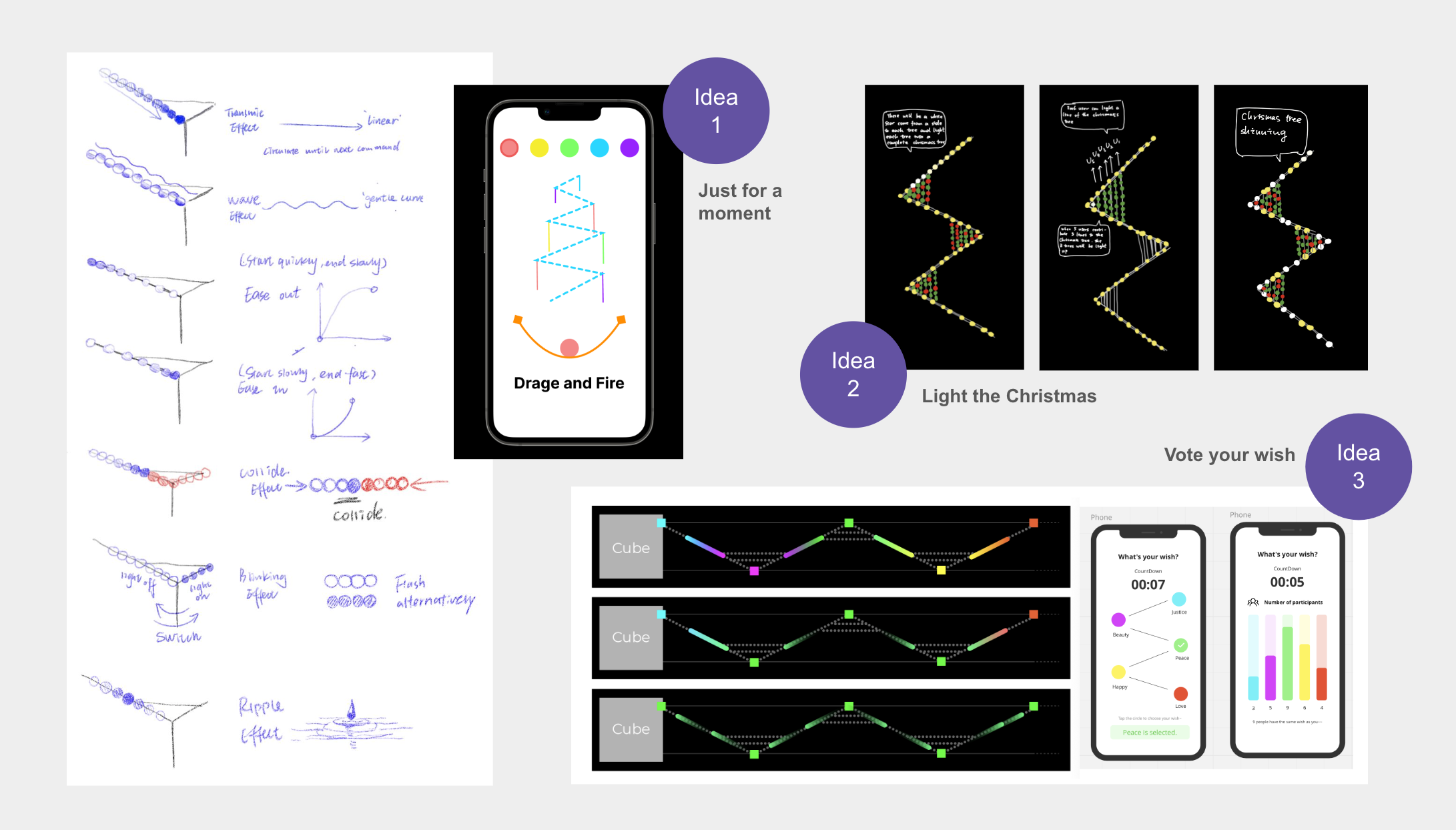
Initial Design Concept
Step 1
Choose a movement effect
Users will need to choose the word they like the best or the word that best expresses their current state among the metaphors (these metaphors stand for 7 different movement effects) we provide. Once they made the choice, they need to play with the bouncing ball.
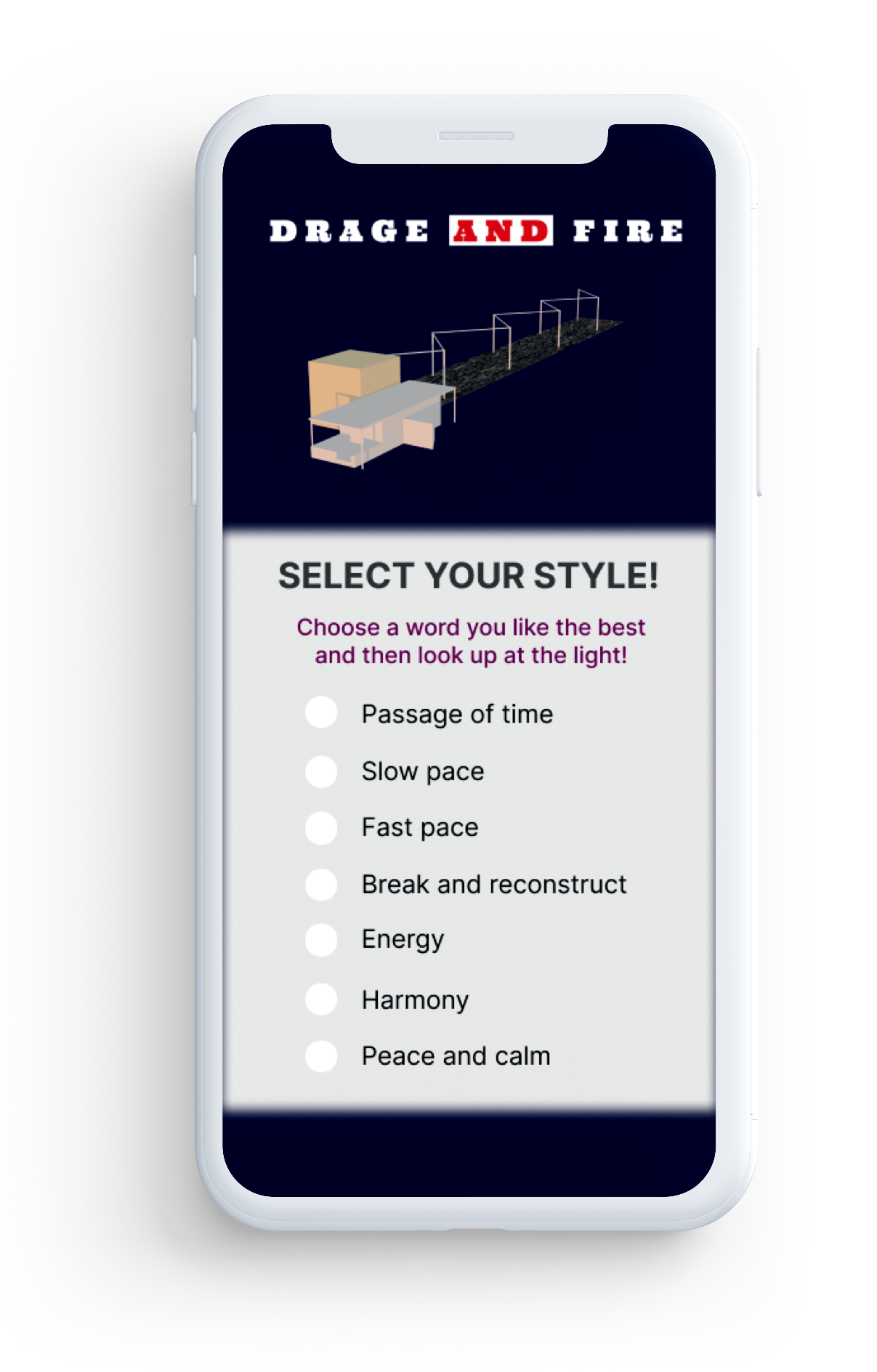
Step 2
Play with the bouncing ball
They can start to play with the bouncing ball by dragging and firing the ball to make it bounce between different poles (these poles are designed as corresponding colors with the ball’s colors). If the red ball they chose successfully hit the red pole, the user will win this small game, and see the choice he or she made in step 1 appear in the catenary lights. Otherwise, the catenary lights would remain its original effect (randomly change patterns between 7 effects and colors).
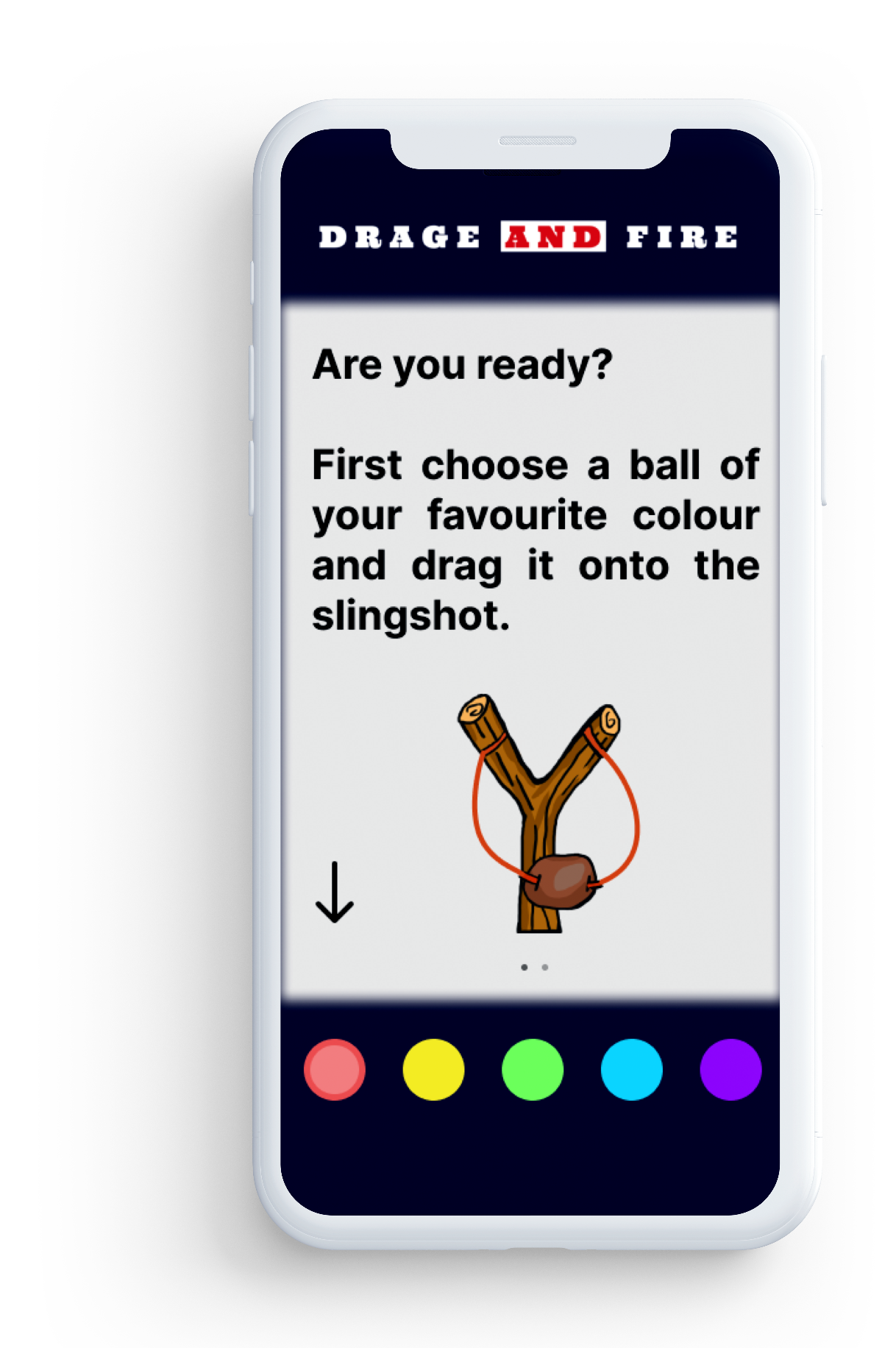
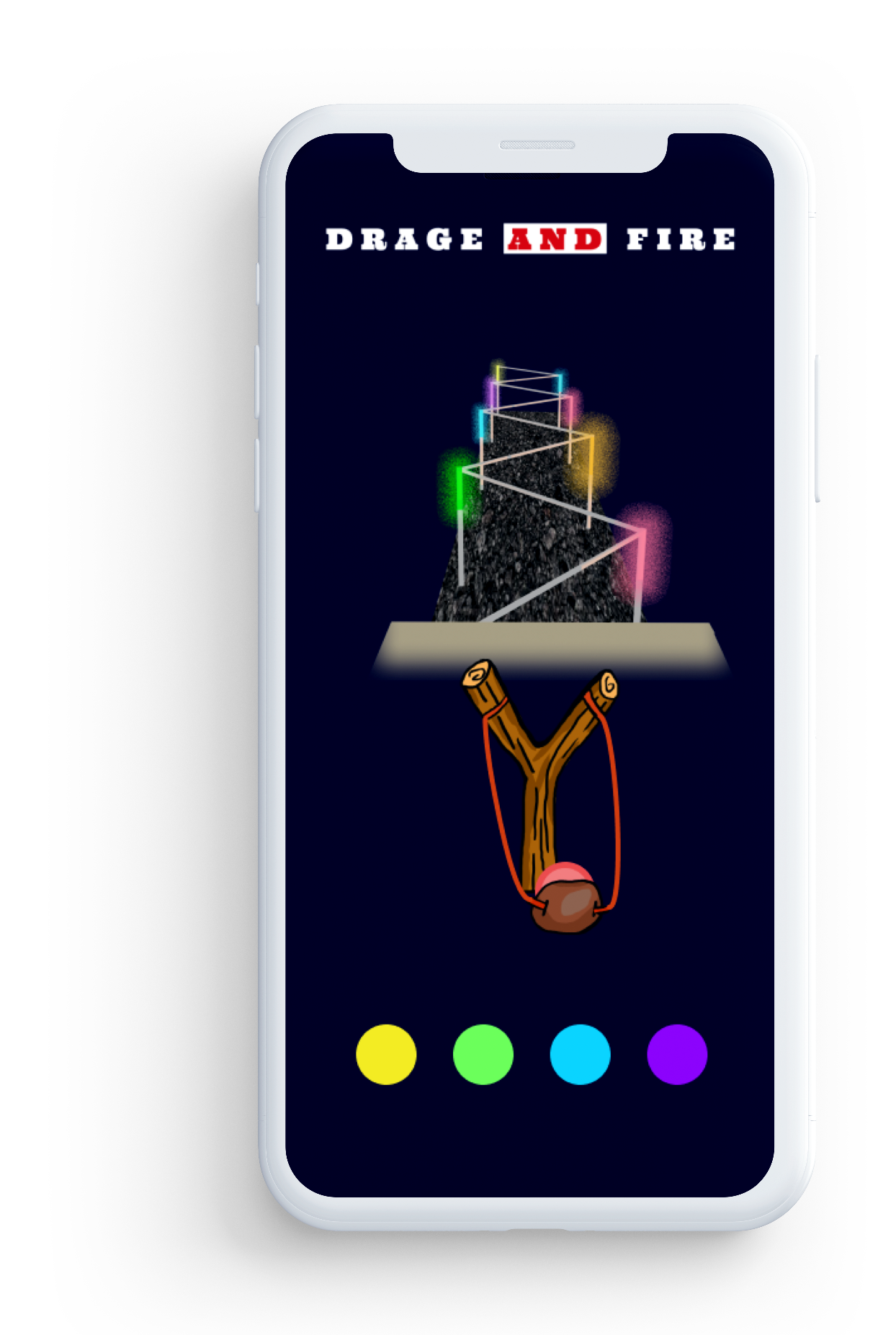
Step 3
Choose the color of lights
Once the movement effect they choose is shown in the catenary lights, users can adjust the colors of lights to make them visually aesthetic.
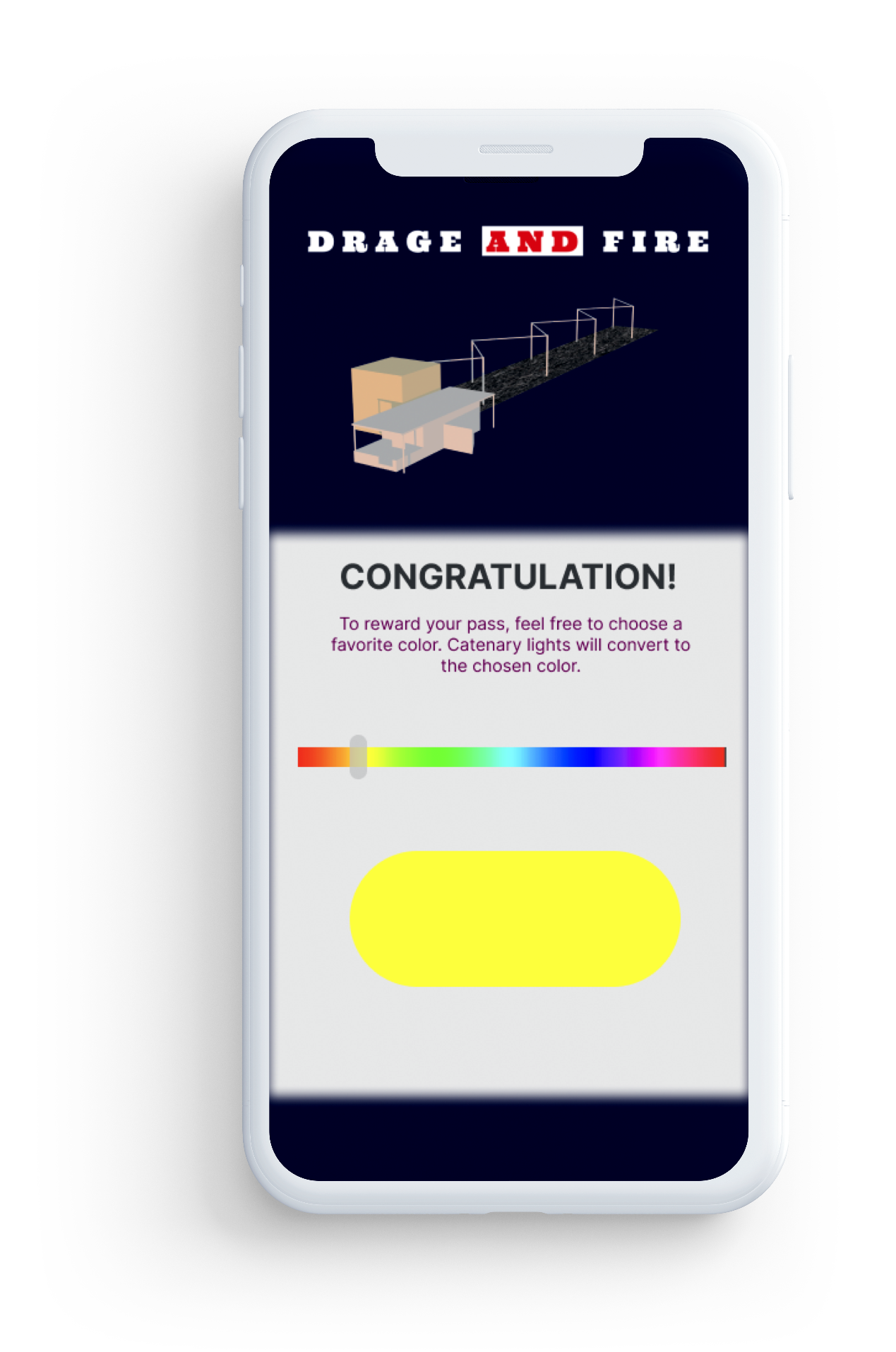
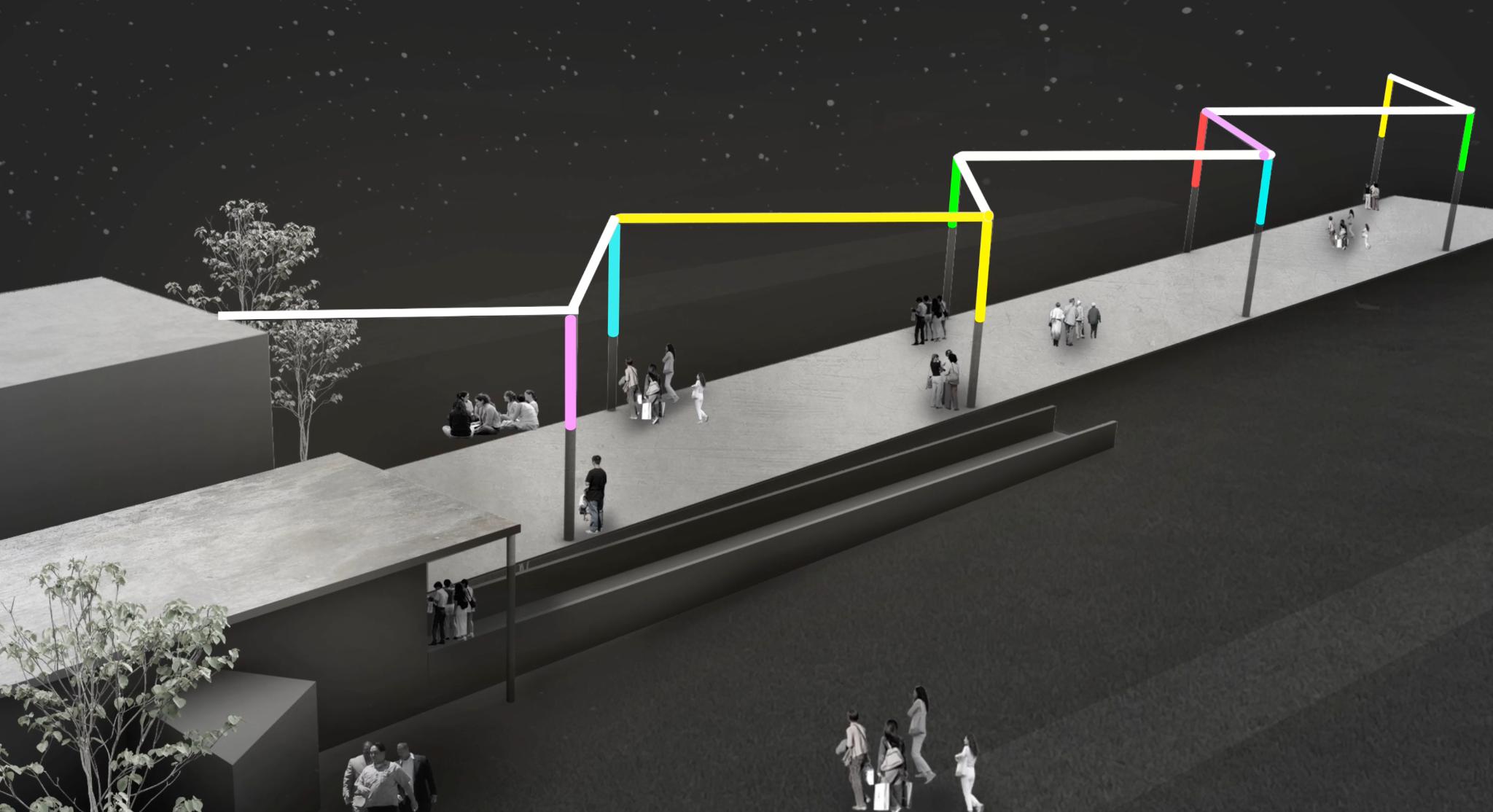
Multiplayer Mode
Storyboard

SWOT analysis based on user test
Strength
The interactive bouncing ball gameplay could create playful experience to users.
Different movement effects which symbolize different metaphors for moods are clear and meaningful.
Weakness
There are too many steps before users can see the lighting effect.
The interaction ways may not adequate.
The interaction way, concept and storytelling aren’t clearly linked with the project theme of ‘growth’.
There are too much text information and it’s hard to read.
Opportunity
Many users just want to see what they do on the mobile interface appears on the catenary lights straightaway, so it could be improved if these complicated steps are removed.
There are many potential ways for interaction, such as colors, speed, direction and location, etc. Try to adapt these to future concepts may improve the depth and playfulness.
Threat
The catenary light is a low resolution screen, it might be difficult to tell a specific story of mood through the lights (compared with projections and high resolution screen).
Technical problems:Limitations in coding skills; At the initial stage, it’s difficult to think of meaningful and playful interaction approaches.
Considerations & Reflections
During the design conceptualization phase, we had considered situations of both one participator and multiple participators in the game. The catenary LED lights are outdoor installations, if many people could participate in the interaction together, it would also be fun, but due to various technical restrictions, we finally chose the single-player version. If there is a chance in the future, we will further study the direction of multi-players interaction.
In the digital placemaking with game attributes, more considerations about how to design the interactive process to make the operation on the mobile terminal intuitive and easy to understand for users and whether the feedback effect given by the LED lights meets the users’ expectations after their operation on phones. More user testing feedback and design iterations are needed to achieve a more mature and playful work.
Design iteration
To enhance the intuitiveness of mobile gaming, we have simplified its process. There are four light poles on the sidewalk, and we assigned different colors to each light pole—red, yellow, blue, and green—and we also used balls of these four colors in the game interface to represent different lighting effects. Users can enjoy different lighting effects by selecting different balls. During the game, when the selected ball stops in an area that matches the color of the designated pole, it means that the user wins the game this round. This victory triggers enhanced lighting effects, giving users the opportunity to enjoy even more visually stunning light art while enjoying the game.
1. Scan and join:
Through scanning a QR code users will be able to approach this interactive artwork via their mobile device.
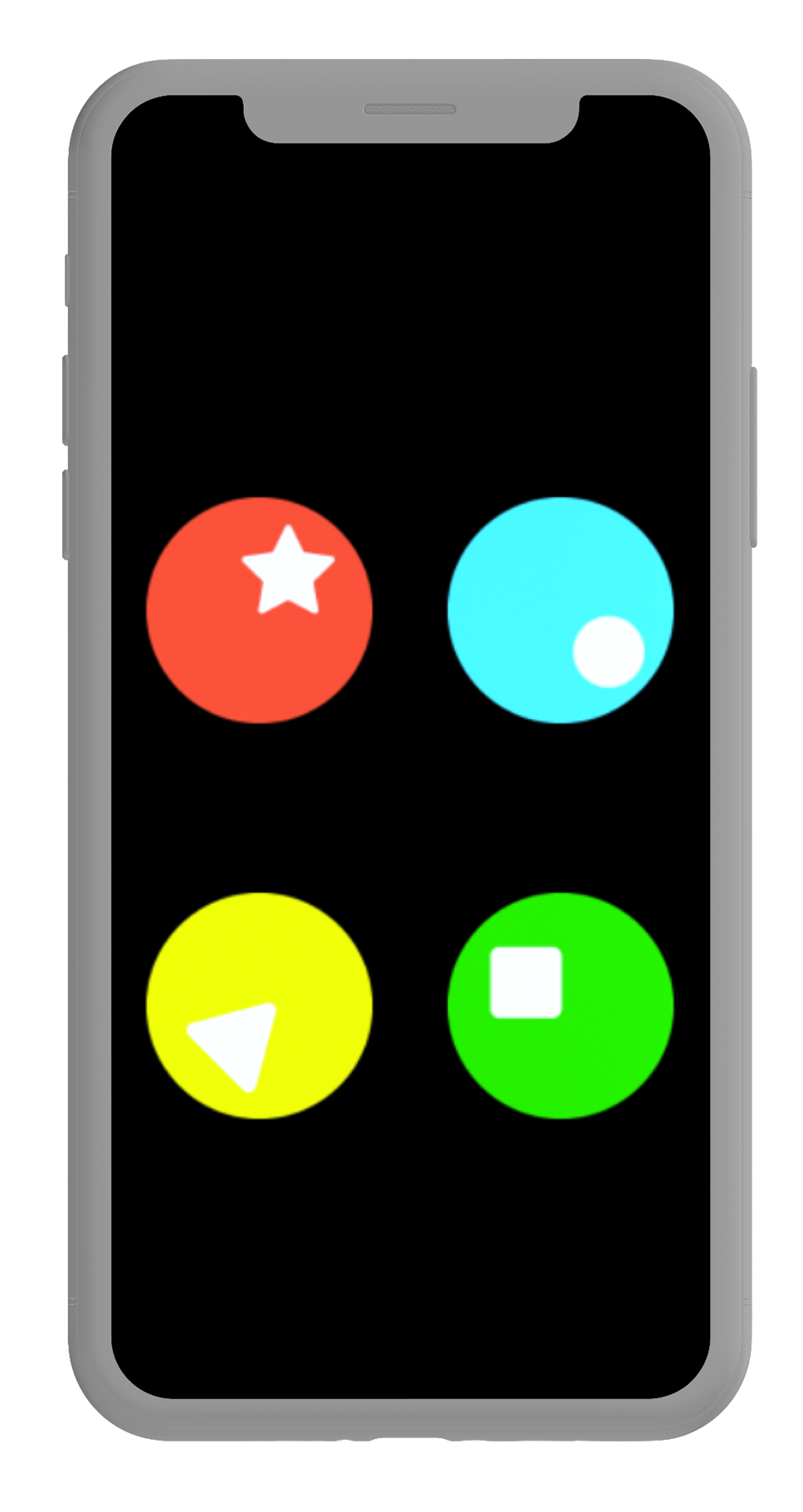
The ball will bounce between poles. The speed of lighting effects will be influenced by the speed of bouncing ball.
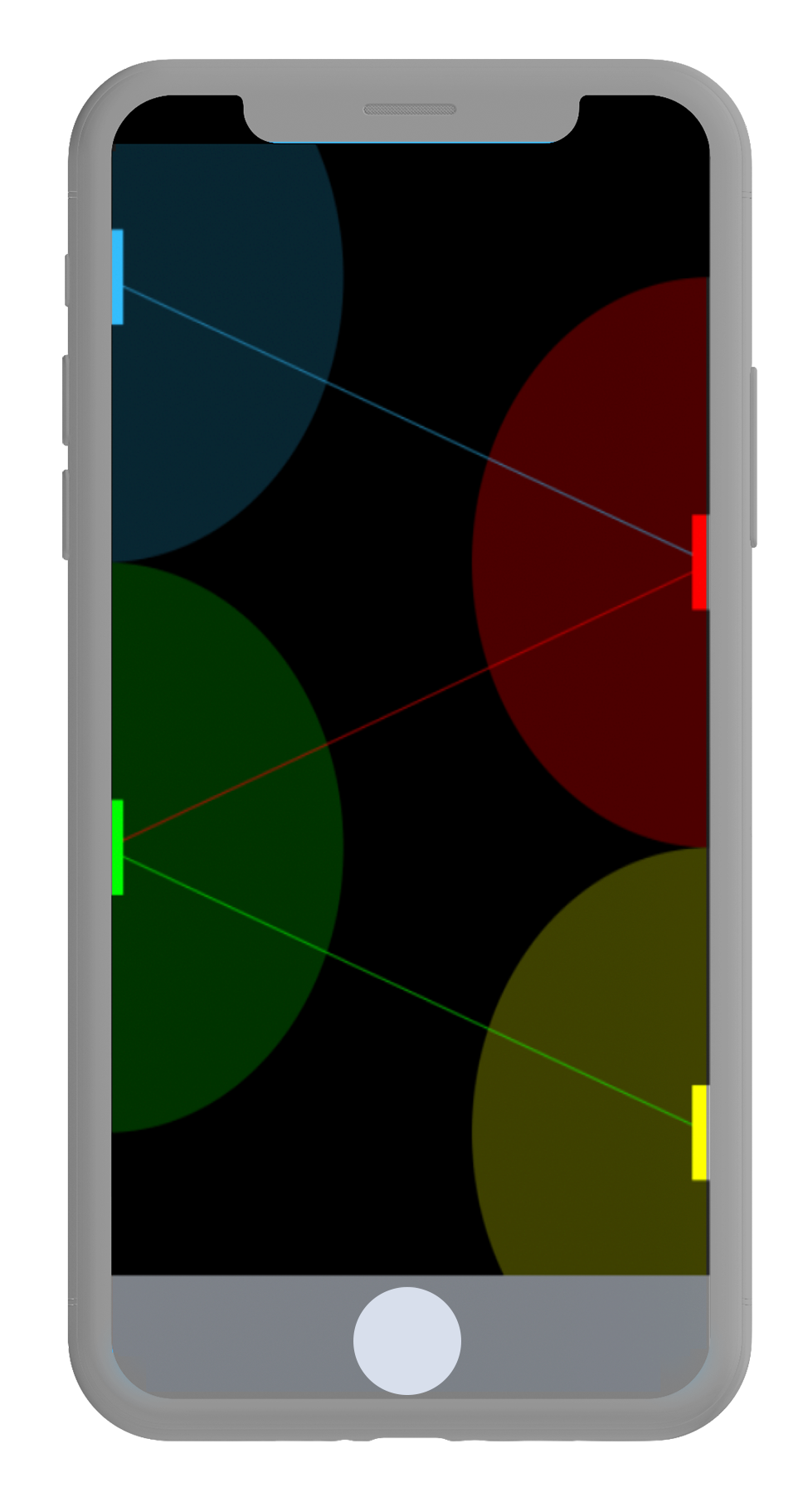
After the design iteration, we conducted user testing again. Based on the feedback we received, we made another SMOT analysis and gained further insights.
Strength
-The idea of firing the ball is interesting.
-The color combination on the catenary lights looks cool.
-Good to use icons stand for different effects.
Weakness
-The connection with ‘growth’ is not clear.
-The interaction is not strong.
-It’s frustrating as current successful rate is very low.
Opportunity
-Expand circular areas for increased user success.
-Try to keep pattern selection and ball game in the same page.
-Improve the UI.
-Try to have an introduction page before pattern selection.
– May have a pop-up window to tell users what will happen next.
Threat
-If the whole panel is the ball game, users’ interaction ways may be limited as they can’t do too much things when the ball is bouncing.
-The ball’s movement is quite stiff due to our coding problems.
Final Design Concept

Introduction
Providing an introduction of how to play the game

Choose a color ball
Four different color balls link to the four different catenary light patterns

Check where your ball stops
The corresponding score will be added according to which areas the ball stops.
Improvements
Link emotions with the ball game
Our concept hopes to bring participants peaceful, warm and positive moods by providing them playful experiences. We hope they can get rid of negative emotions after the interaction, even just for a moment.
So, we use different emojis to stand for different moods, and link moods with ‘basic’ and ‘enhanced’ versions of lighting effects to guide users realize how meaningful of positive feelings may be.
Point System
The top area is the ‘pattern selection’ feature: Each ball stands for one basic movement pattern (or effect) on the catenary lights. Once the pattern ball is successfully fired via the launch button (at the bottom), the overall score and progress bar will increase 10. In particular, the speed at which the ball is shot depends on how long the user presses the launch button.
Four circles:
These four areas stand for four moods from sad to extremely happy (i.e., from negative to positive). The corresponding score will be added according to which areas the ball stops. Users can see the real-time changes in the score.
Enhanced effects
There are four key stages (i.e., 25, 50, 75, 100) in the scores. Once users reach these stages, the enhanced version of movement pattern will appear on the catenary lights. This new mechanism provides a reward to users, and maps different emotions to different scores to imply the growth.
Improve in the user interface
We add the starry sky as the background, and also expand four circular areas to increase the successful experience.
Four Basic Light Style
Choose between pattern balls to see different effects on the lights:Red-Collision style, Green-Blink style, Purple-Riple style, and Blue-Wave style.
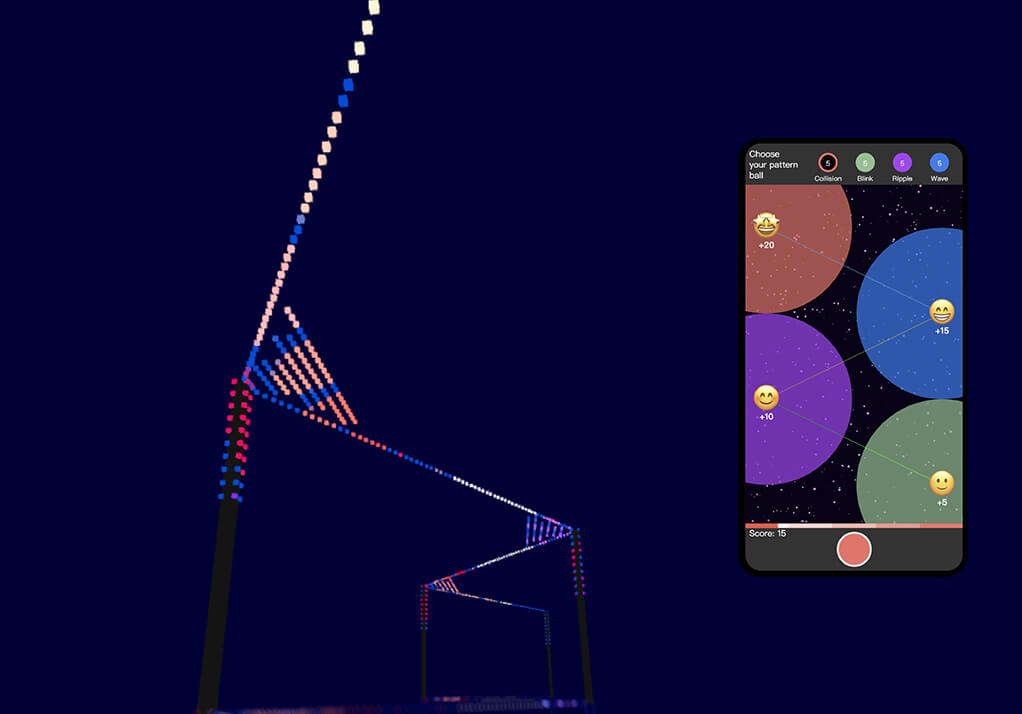
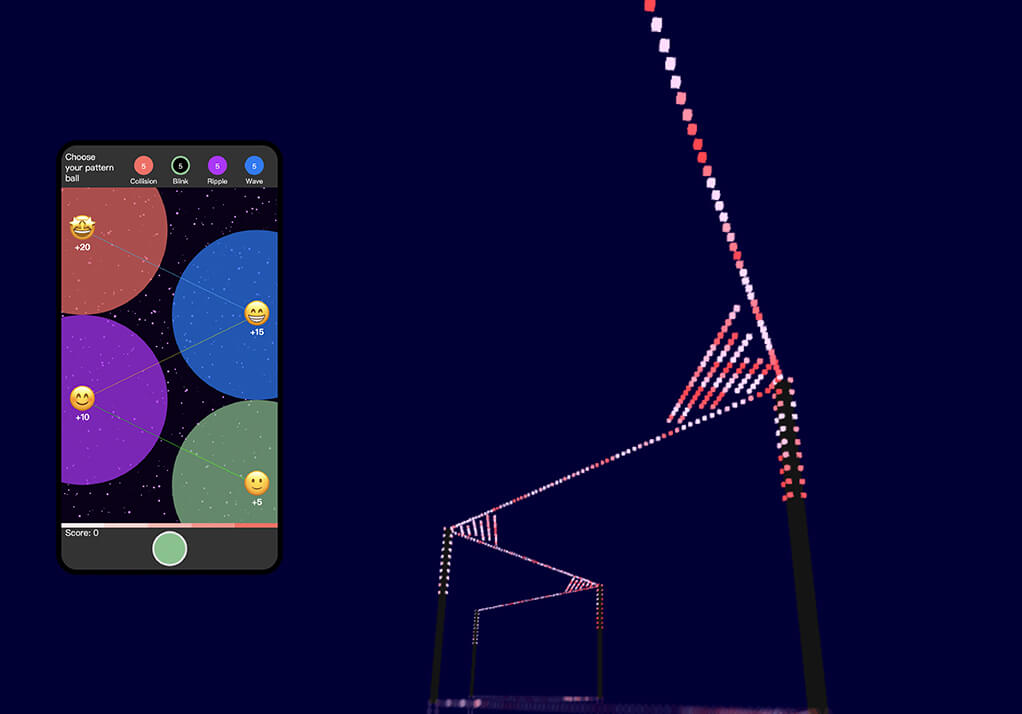
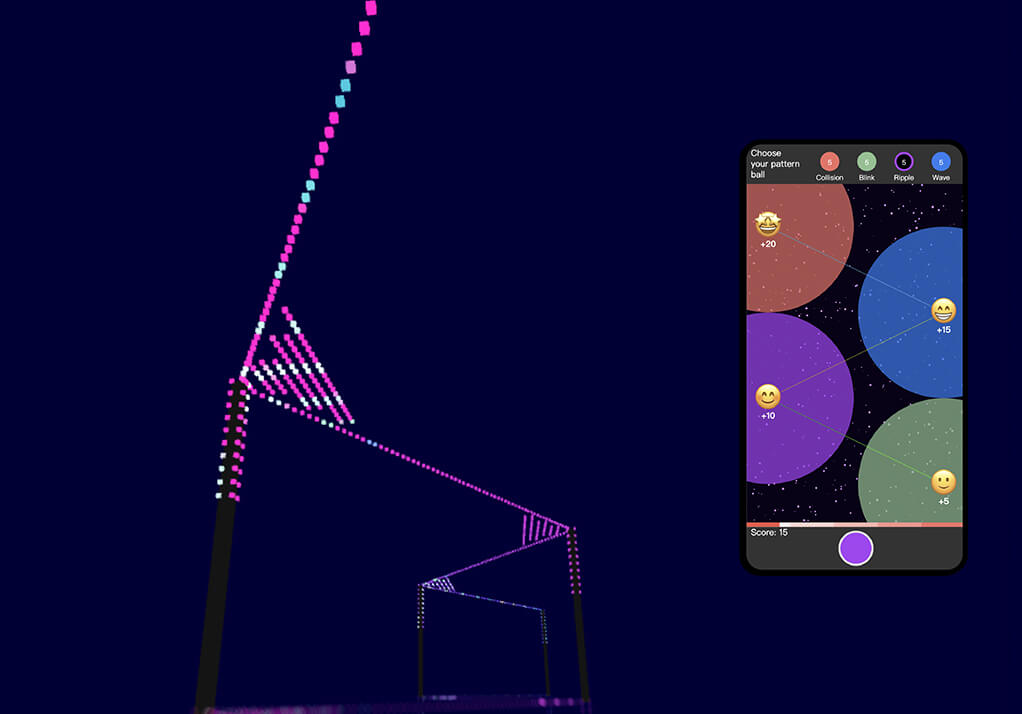
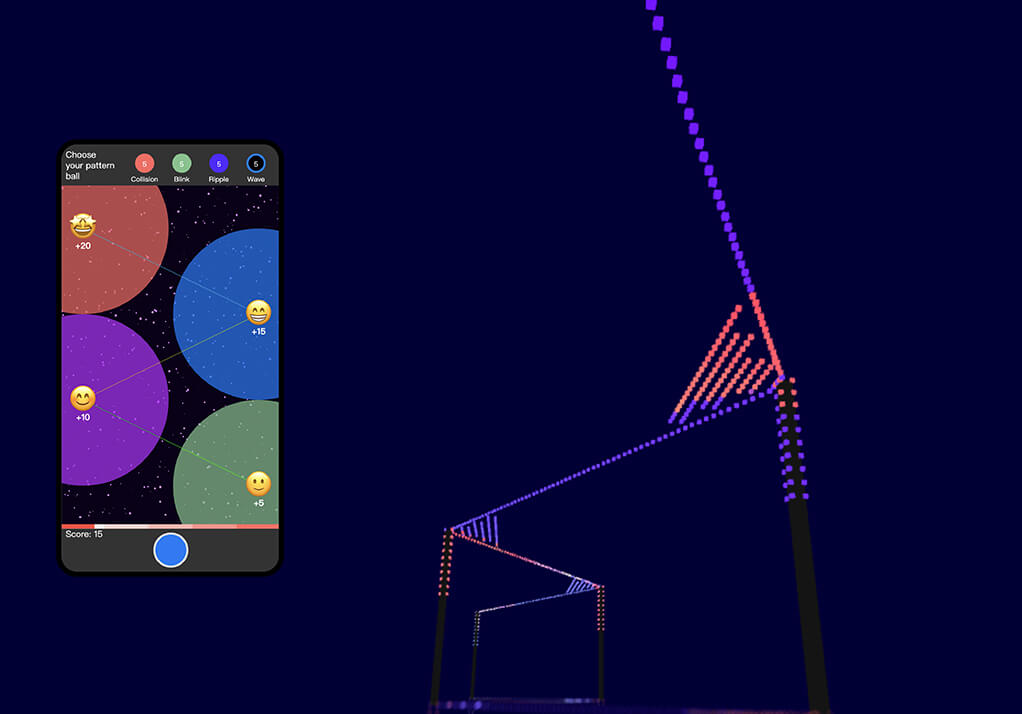
Light Style Change Interaction
Firing Ball Interaction
Future Improvements
1. Due to time constraints, the game over page was not actually completed. In the next design iteration we will refine the design and provide more information, such as congratulations/encouragement messages, current score, “try again” button, etc.
2. Currently there are no special effects happened when the ball stops at the emoji panel. In the future version, we may connect the color of the emoji panel to the light patterns (e.g., if the ball stops at the red emoji panel, then send red color scheme to the lights).
3. We may change the movement of the ball more smoothly and real because current movement of the ball is quite stiff.
4. We may explore more potential interaction approaches, and link it to the current ball game, such as sending position, direction, color, pattern, and motion messages to the server.
5. Allowing users to have better control on the launch button. For example, changing long press to drag gesture, and enabling users to change the direction of ball, etc.
6. We may need to modify the game settings or rules more thoughtfully to better adapt to the multi-user version.
Unit: IDEA Studio 9102 Mobile App Development: Wei Xu & Luohan Liu Light Style Development: Xiong Hong Video Editing: Honghao Zhang